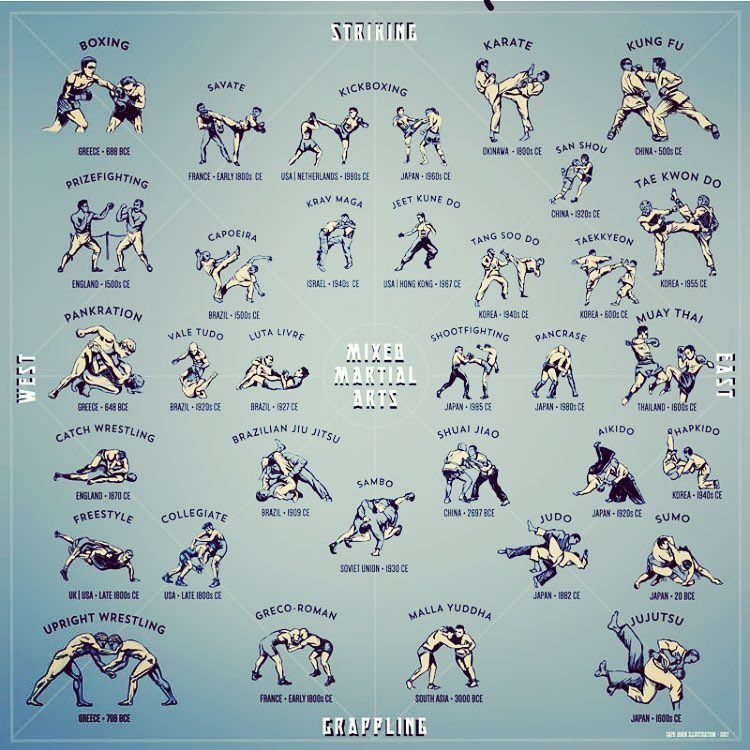Unraveling The Mystery Of Several Martial Arts Techniques: An Overview To Martial Arts, Taekwondo, And Extra
Unraveling The Mystery Of Several Martial Arts Techniques: An Overview To Martial Arts, Taekwondo, And Extra
Blog Article
Web Content Writer-Carlson Francis
Are you tired of feeling overwhelmed by the substantial globe of martial arts? With many designs to pick from, it can be very easy to get shed in a sea of strikes, kicks, and mystical names. However worry not!
This discussion will certainly demystify the different martial arts styles, taking you on a journey from the effective strikes of Martial arts to the dynamic kicks of Taekwondo. Get ready to discover the beginnings, techniques, and viewpoints behind these old art forms.
So, tighten your belt and prepare to embark on an informing exploration right into the fascinating globe of fighting styles.
Origins of Martial Arts Styles
The origins of martial arts designs can be traced back to ancient civilizations and their requirement for self-defense and fight strategies. Throughout history, different societies created their own special methods of combating, each with its own set of strategies and philosophies.
In China, as an example, fighting styles designs such as Martial art and Tai Chi were developed as a way of self-defense and enhancing physical and psychological wellness.
In Japan, the samurai warriors created styles like Martial arts and Judo, focusing on discipline, precision, and proficiency of the body.
In https://www.ancient-origins.net/history-famous-people/sword-fighters-0017794 , in Korea, Taekwondo became a fighting style stressing high kicks, rapid activities, and psychological fortitude.
shotokan karate for older adults laid the foundation for the diverse range of martial arts styles that exist today, each with its own abundant background and social significance.
Strategies and Training Techniques
To master martial arts styles, practitioners must find out numerous strategies and training techniques.
Strategies are the certain motions and activities utilized in combat, such as strikes, kicks, throws, and obstructs. Different martial arts styles have their very own distinct set of techniques that practitioners have to master with rigorous training.
Training techniques vary depending on the design, but they usually involve a mix of physical fitness, drills, competing, and forms.
Physical conditioning is vital to construct strength, versatility, and endurance. Drills help professionals fine-tune their strategies and boost their rate and accuracy.
Sparring enables practitioners to practice their techniques in a controlled, realistic atmosphere. Forms, likewise known as kata, are deliberate series of movements that help practitioners create muscle mass memory and focus.
Philosophies and Concepts
Exploring the viewpoints and concepts of martial arts styles can supply you with a deeper understanding of your chosen discipline. Each fighting style has its own distinct philosophy and collection of directing concepts that shape the means it's practiced.
As an example, Karate highlights technique, respect, and self-control. It educates specialists to focus their minds and bodies, enabling them to protect themselves while preserving a feeling of internal peace.
On the other hand, Taekwondo positions a strong focus on rate, dexterity, and adaptability. Its concepts are rooted in the tenets of politeness, honesty, determination, self-control, and unbeatable spirit.
Verdict
Since you have actually explored the beginnings, strategies, and philosophies of different martial arts styles, you have a much deeper understanding of these old disciplines.
Picture a young karate pupil, exercising with undeviating decision and emphasis, appearing boards with an effective strike.
Their journey showcases the devotion and stamina required to grasp a fighting style, reminding us that with discipline and determination, anything is feasible.
